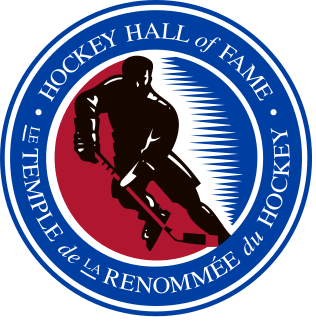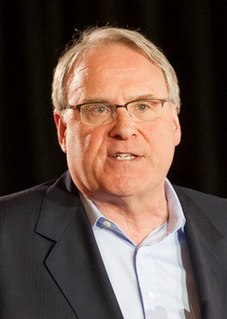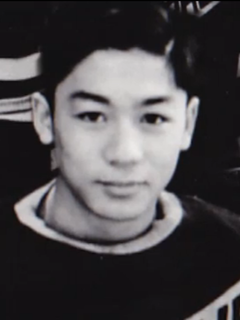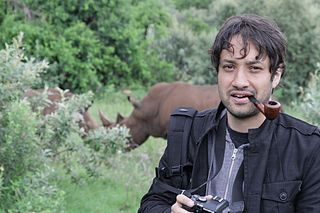Related Research Articles

The Hockey Hall of Fame is a museum and hall of fame located in Toronto, Ontario, Canada. Dedicated to the history of ice hockey, it holds exhibits about players, teams, National Hockey League (NHL) records, memorabilia and NHL trophies, including the Stanley Cup. Founded in Kingston, Ontario, the Hockey Hall of Fame was established in 1943 under the leadership of James T. Sutherland. The first class of honoured members was inducted in 1945, before the Hall of Fame had a permanent location. It moved to Toronto in 1958 after the NHL withdrew its support for the International Hockey Hall of Fame in Kingston, Ontario, due to funding issues. Its first permanent building opened at Exhibition Place in 1961. The hall was relocated in 1993, and is now in Downtown Toronto, inside Brookfield Place, and a historic Bank of Montreal building. The Hockey Hall of Fame has hosted International Ice Hockey Federation (IIHF) exhibits and the IIHF Hall of Fame since 1998.

Kenneth Wayne Dryden is a Canadian politician, lawyer, businessman, author, and former National Hockey League (NHL) goaltender. He is an Officer of the Order of Canada and a member of the Hockey Hall of Fame. He was a Liberal Member of Parliament from 2004 to 2011 and Minister of Social Development from 2004 to 2006. In 2017, the league counted him in history's 100 Greatest NHL Players. He received the Order of Hockey in Canada in 2020.
Robert Michael Gainey is a Canadian former professional ice hockey player who played for the Montreal Canadiens from 1973 until 1989. After retiring from active play, he became a hockey coach and later an executive with the Minnesota North Stars/Dallas Stars organization before returning to Montreal as general manager from 2003 to 2010. Currently, Gainey serves as a team consultant for the St. Louis Blues as well as a volunteer senior advisor for the Peterborough Petes of the Ontario Hockey League. He was inducted into the Hockey Hall of Fame in 1992. In 2017 Gainey was named one of the '100 Greatest NHL Players' in history.

Howard William Meeker was a Canadian professional hockey player in the National Hockey League, youth coach and educator in ice hockey, and a Progressive Conservative Member of Parliament. He became best known to Canadians as an excitable and enthusiastic television colour commentator for Hockey Night in Canada, breaking down strategy in between periods of games with early use of the telestrator.

James Dickinson "Dick" Irvin Jr. was a Canadian professional ice hockey player and coach. He played for professional teams in the Pacific Coast Hockey Association, the Western Canada Hockey League, and the National Hockey League (NHL) from 1916 to 1928, when he had to retire from repeated injuries. Irvin was one of the greatest players of his day, balancing a torrid slap shot and tough style with gentlemanly play. For his playing career, Irvin was named to the Hockey Hall of Fame in 1958. After playing, Irvin built a successful career as a coach in the NHL with the Chicago Black Hawks, Toronto Maple Leafs, and Montreal Canadiens. He won one Stanley Cup as a coach with Toronto, three more with Montreal, finishing with over 600 wins as a coach. He also served in the Canadian Expeditionary Force during the First World War.

Douglas Wagner Bentley was a Canadian ice hockey left winger who played 13 seasons in the National Hockey League (NHL) for the Chicago Black Hawks and New York Rangers as part of a senior and professional career that spanned nearly three decades. He was named to four NHL All-Star Teams in his career and was the scoring leader in points and goals in 1942–43 and again in goals in 1943–44.

William Mosienko was a Canadian professional ice hockey right winger who played 14 seasons in the National Hockey League (NHL) for the Chicago Black Hawks. He is best noted for recording the fastest hat trick in NHL history. In a 1952 game against the New York Rangers, Mosienko scored three goals in 21 seconds.
Herbert Henry Carnegie, CM, O.Ont, OMC was a Canadian ice hockey player of Jamaican descent. After his playing career was over, he became a successful businessman working in the investment industry. In 1954, he founded one of Canada's first hockey schools, Future Aces, and through his work in training young hockey players, became a member of both the Order of Ontario and the country's highest civilian award, the Order of Canada. His hockey career was recognized when he was inducted into Canada's Sports Hall of Fame in 2001, and the Ontario Sports Hall of Fame in 2014,
The 1952–53 NHL season was the 36th season of the National Hockey League. The Montreal Canadiens were the Stanley Cup winners as they beat the Boston Bruins four games to one in the final series.
Evan Beloff is a Canadian film writer, producer, director and production company executive.
Roy Alvin "Red" Storey, was a Canadian athlete, referee and broadcaster. He played football, lacrosse and ice hockey. While active as an athlete, he turned to officiating in all three sports and continued as an official after the end of his playing career. He is best known for being a referee for the National Hockey League professional ice hockey league. While he was a member of the Toronto Argonauts, the team won the Grey Cup Canadian championship twice. He later became a radio and television commentator for Canadian television.

Lawrence Kwong was a Canadian professional ice hockey forward who was the first non-white and Asian descent player in the National Hockey League (NHL). He broke the NHL's colour barrier when he debuted with the New York Rangers in 1948, playing a short shift at the end of the third period. Although denied much playing time in the NHL, Kwong was a top player in senior hockey leagues outside the NHL throughout his entire career and battled the likes of Jean Beliveau for the scoring race in Quebec.

Daniel Vladimir Lewicki was a Canadian professional ice hockey player. He played for the Toronto Maple Leafs, Chicago Black Hawks and New York Rangers of the National Hockey League (NHL) in the 1950s and early 1960s. Before becoming a professional, Lewicki was at the center of a dispute over professional hockey signing practices. As of 2010, Lewicki is the only player to have won the Allan Cup, Memorial Cup and Stanley Cup while still a junior.

The Colored Hockey League of the Maritimes (CHL) was an all-black ice hockey league founded in Nova Scotia in 1895, which featured teams from across Canada's Maritime Provinces. The league operated for several decades lasting until 1930.

Max Wallace is a New York Times-bestselling author and historian specializing in the Holocaust, human rights in sport, and popular culture. He is also an award-winning filmmaker, and long-time human rights activist.

The Original Six era of the National Hockey League (NHL) began in 1942 with the demise of the Brooklyn Americans, reducing the league to six teams: Boston Bruins, Chicago Black Hawks, Detroit Red Wings, Montreal Canadiens, New York Rangers, and Toronto Maple Leafs. This structure remained stable for a quarter century; the era ended in 1967 when the NHL doubled in size adding six expansion teams.

Mila Aung-Thwin is a Canadian documentary filmmaker, producer and activist whose films deal with social justice.
The history of black players in North American ice hockey has roots dating back to the late 19th century. The first black ice hockey star was Herb Carnegie during the Great Depression. Willie O'Ree broke the NHL's black color barrier with the Boston Bruins in 1958.

Vincent Churchill "Manny" McIntyre was a Canadian professional athlete who played both ice hockey and baseball. He is an induct of the New Brunswick Sports Hall of Fame, Canada's Sports Hall of Fame, and the Canadian Baseball Hall of Fame.
References
- ↑ Harris, Cecil (1 January 2007). Breaking the Ice: The Black Experience in Professional Hockey. Insomniac Press. ISBN 9781897415054 . Retrieved 26 April 2017– via Google Books.
- ↑ "A Hockey Trailblazer Who Missed His Chance". The New York Times. 10 March 2012. Retrieved 26 April 2017.